Entity relationship diagrams
In entity relationship diagrams the tables are drawn with lines connecting them to show relationships.
They can either be simple, just showing the table name:
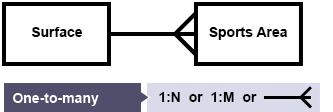
Or more complex, listing the attributes within the table:
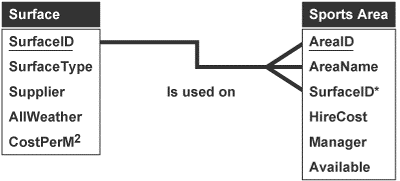
In either case, the important part of the design is the line connecting the tables. This represents the type of relationship between them.
Entity occurrence diagrams
An entity-occurrence diagram shows the relationship between occurrences of entities. In other words specific entries in a table rather than the table as a whole.
Each table is shown as a tall oval. Each occurrence of an entity is show by a dot and a description.
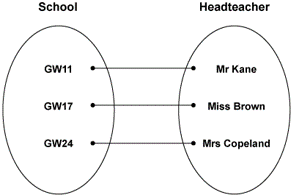
One-to-one relationship
A one-to-one relation occurs when an entity in one table is only ever related to a single entity in another table and vice versa. It can be represented in either of the following ways:


One-to-many relationship
A one-to-many relation occurs when an entity in one table can be related to multiple entries in another table. It can be represented in either of the following ways:

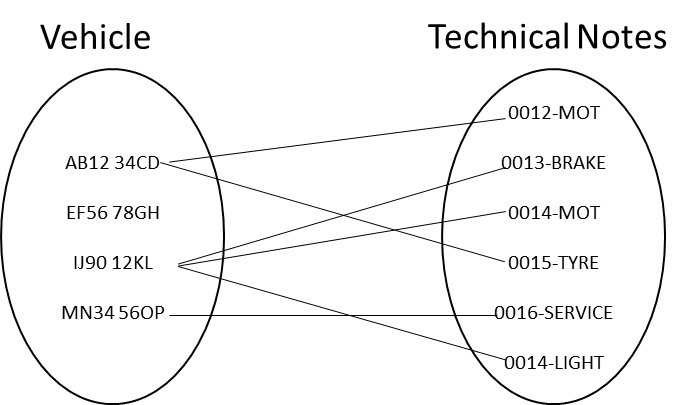
Many-to-many relationship
A many-to-many relation occurs when an entities in one table can be related to multiple entries in another table and vice versa. It can be represented in either of the following ways:

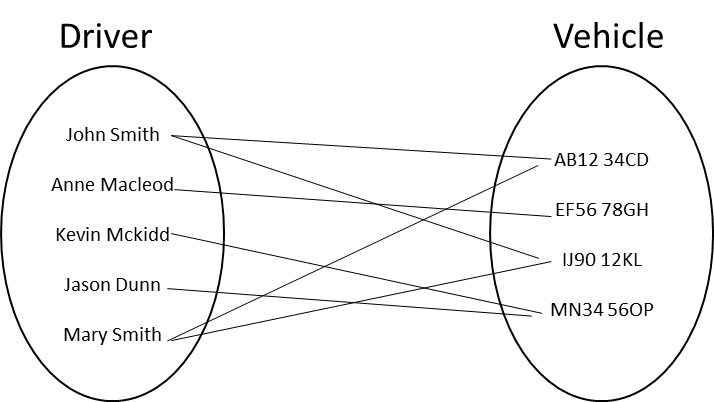
Data dictionaries
Data dictionaries are used to define the structure of a database.
Data dictionaries contain the following:
- The name of each entity.
- The name of each attributes for each entity.
- The data type of each attribute.
- The size of each attribute.
- The attributes that will be used as keys.
- Any validation of attributes.

Validation of attributes
In an RDBMS you can specify that an attribute needs to meet certain criteria to be considered valid. Invalid data will not be accepted and so the insert or update command will be ignored.
The criteria can be:
- Presence. Has any data been provided e.g. leaving a field blank.
- Length. Limiting the input to a certain number of characters.
- Restricted choice. Only accepting inputs that are certain vales.
- Restricted range. Only accepting inputs between certain values.
Query design
It is important to take time to design any queries that may need to be implemented later.
At the design stage at SCQF level 6, it is necessary to state the following:
- fields
- tables
- search criteria
- sort order
- calculations
- grouping
Shorthand can be used for the terms Ascending (ASC) and Descending (DESC).
Only fields and tables are mandatory, the others depend on the query.
Example
Here is an example query to find the details of the customers for the vehicle with an example number plate of “AB1234CD”.

